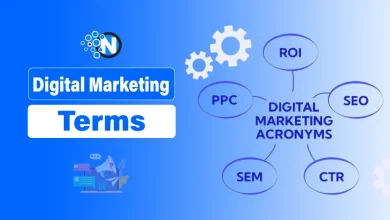Boosting Productivity for Digital Marketers: Tools and Habits That Actually Work

We All Have the Same 8 Hours — Why Do Some People Get More Done?
If you’ve ever looked at another marketer’s output and thought, “How are they doing all that?” you’re not alone. We all start the day with the same hours, but some people seem to move faster, stay more focused, and finish their work without looking completely fried.
It’s not magic. It’s not hustle culture. Most of the time, it comes down to a few simple habits and tools that remove friction, the kind that creeps into your day when your brain is juggling too much.
In this blog post, I will explain what the most productive digital marketers do differently and how you can steal their playbook quietly.
Let’s start!
What Digital Marketers Do to Boost Productivity

1. They Don’t Just Trust Their Memory — They Build Systems
One of the fastest ways to kill your productivity is to try to keep everything in your head. People who seem calm and efficient usually have simple systems they trust. They know where ideas go. Where to track tasks. How to hand something off. And where to pick it up again.
A system doesn’t have to be fancy. A few shared boards in Trello or Notion, a daily note in Apple Notes, or even a physical planner can work, as long as it helps you stop asking “Wait, what was I doing again?”
📌 Pro tip: Try a morning “reset” habit. Spend 10 minutes listing what’s in progress, what’s waiting, and what needs a push. It clears mental clutter before the day starts.
2. They Outsource the Mental Drag (Not the Work Itself)
Great marketers don’t avoid the hard parts; they avoid the repetitive parts. That means using tools that take the grunt work off their plate, especially when it comes to writing, organizing, or reworking things.
If you’re rewriting the same sentence five times or polishing wording until your eyes blur, consider handing that off to a tool. Something like a sentence rephraser can help you express the same idea with better flow, especially when you’re burned out or stuck.
They also use auto-schedulers for social content, templates for briefs, and shared folders for feedback loops—not to avoid thinking but to focus that thinking where it counts.
3. They Actually Take Breaks (But Smart Ones)
It might sound counterintuitive, but walking away from your screen is sometimes the most productive thing you can do. Productive people tend to be deeply aware of their own focus cycle, and they take short, intentional breaks before their brain crashes.
There’s research behind this, too. Studies from the University of Illinois show that people who take microbreaks perform better in sustained tasks than those who grind through without pause (source).
Try working in 50-minute bursts, then walking away for five. Or take a midday “input hour” where you watch, read, or listen to something totally unrelated to your tasks. It resets your creative energy and can spark new ideas unexpectedly.
4. They Learn What to Ignore
Not every ping deserves your attention. Not every metric needs a deep dive. High-output marketers are often very good at letting go of the non-essential, and they’re not shy about muting, snoozing, or deleting things that clutter their mental space.
Start by asking: What’s the smallest set of things I need to get real work done today? Then block off time to do just that, and protect it like it’s a meeting with your future self.
Habits That Make a Real Difference
While tools are helpful, your daily habits are what really shape how productive you are. And the best part? Most of them are easy to start.
One powerful habit is time blocking and setting specific hours for focused work instead of multitasking all day. Even blocking just 90 minutes in the morning to handle deep tasks (like writing or planning) before checking emails can double your output. Many marketers find this helps reduce stress because their day starts with progress, not distractions.
Batching similar tasks is another simple trick: instead of writing social posts or emails one by one, group them and do several at once. It’s faster, and your brain stays in the same mode, so you work more efficiently.
And don’t skip breaks—short pauses between tasks actually help your brain reset. A five-minute walk or even switching to a different kind of task gives your mind a breather, which leads to better decisions and fewer mistakes.
Over time, these habits build momentum. You’ll start spotting which activities move your work forward—and which ones just feel busy. That’s the real shift from being busy to being effective.
Build Your Own Productivity Stack
There’s no one-size-fits-all solution when it comes to getting things done. What works for one marketer might not work for another, and that’s okay. The key is to build your own system of tools and habits that support your workflow.
Start by asking: Where do you lose the most time or focus? Is it writing? Staying organized? Switching between apps? Pick one area and try a tool that could help; even a small improvement can save hours over the week.
For example, if content writing slows you down, pairing a writing assistant like a sentence rephraser with Grammarly can help speed up your first draft and clean up your final version. If your projects feel scattered, using Notion to track campaigns, deadlines, and feedback in one place could bring clarity.
Don’t add too many tools at once. Test one or two, see how they fit into your routine, and only keep what truly saves you time or reduces stress. Over time, your “stack” should feel like a quiet helper, not another thing to manage.
The goal isn’t to be perfectly optimized, it’s to feel more in control of your time, so you can focus on creative work and real results.
Summing Up – Make Space for What Matters
Being productive as a digital marketer isn’t about squeezing more into your day—it’s about making room for the work that counts. With the right mix of tools, habits, and focus, you can cut the noise, save time, and actually enjoy the creative side of marketing again.
Start small. Try one tool. Change one habit. Over time, those small shifts build a workflow that feels easier, more organized, and more effective.
And when you’re not stuck rewriting the same sentence or chasing down overdue tasks, you get more time for strategy, ideas, and maybe even a break.




